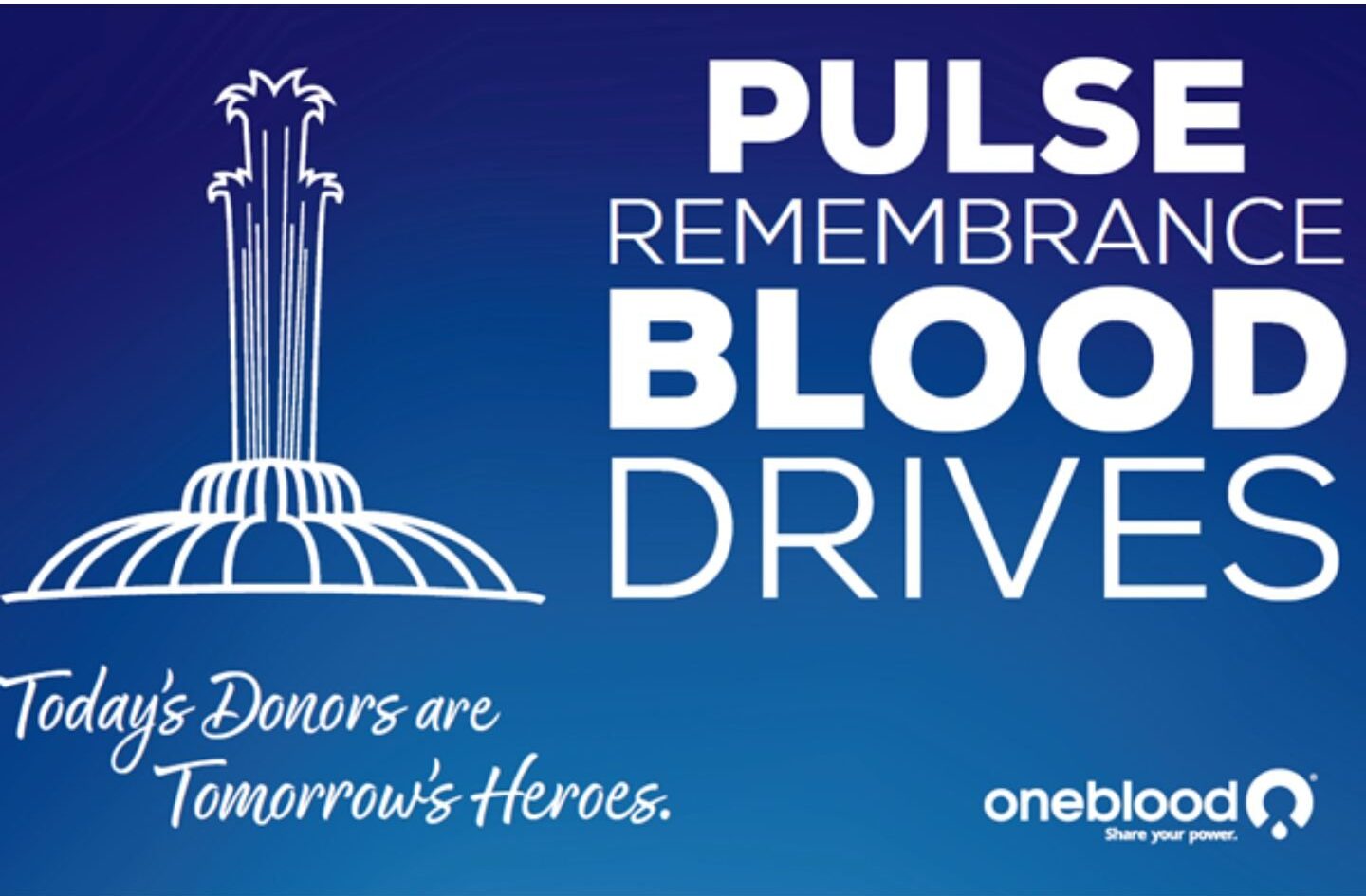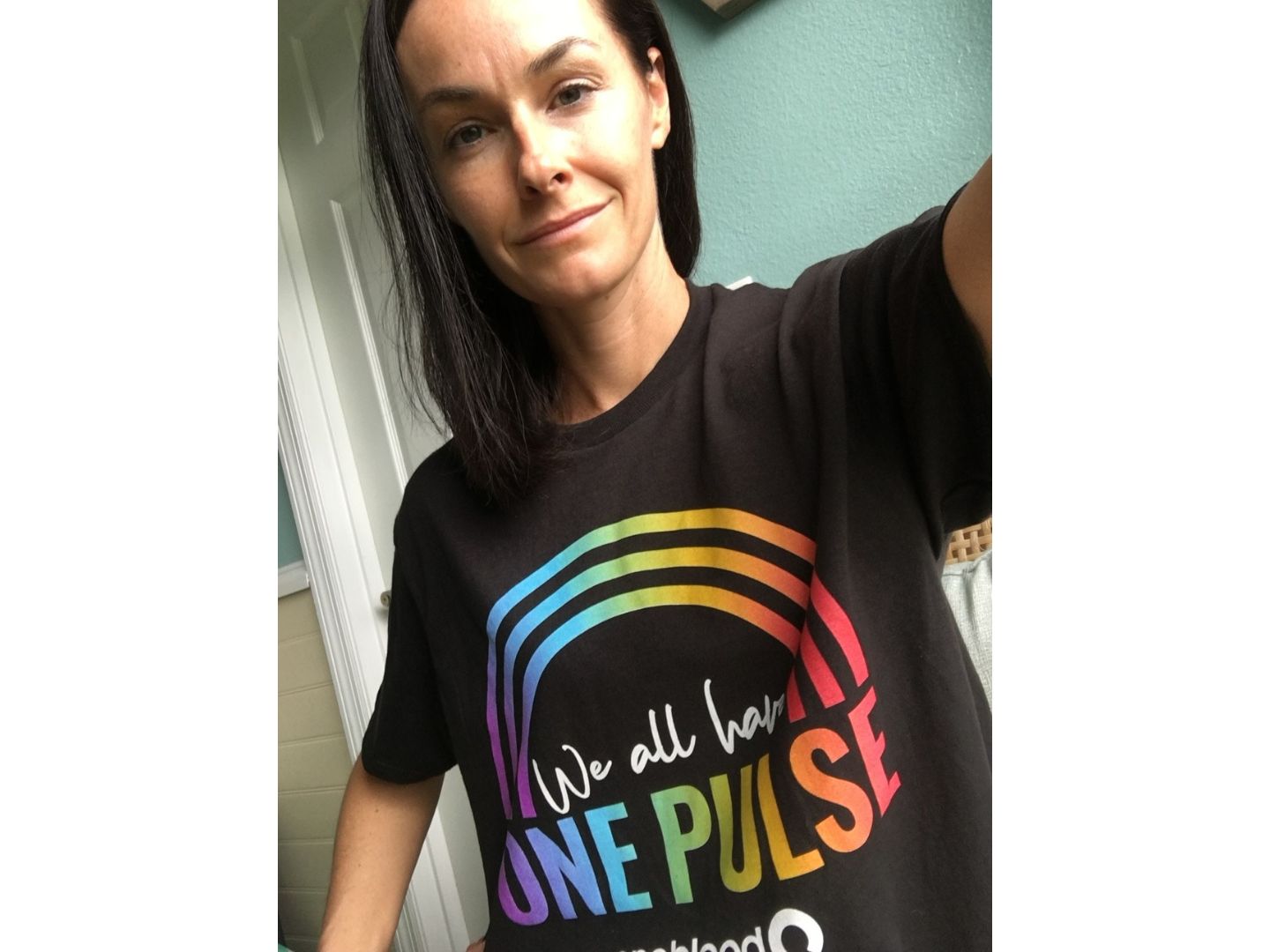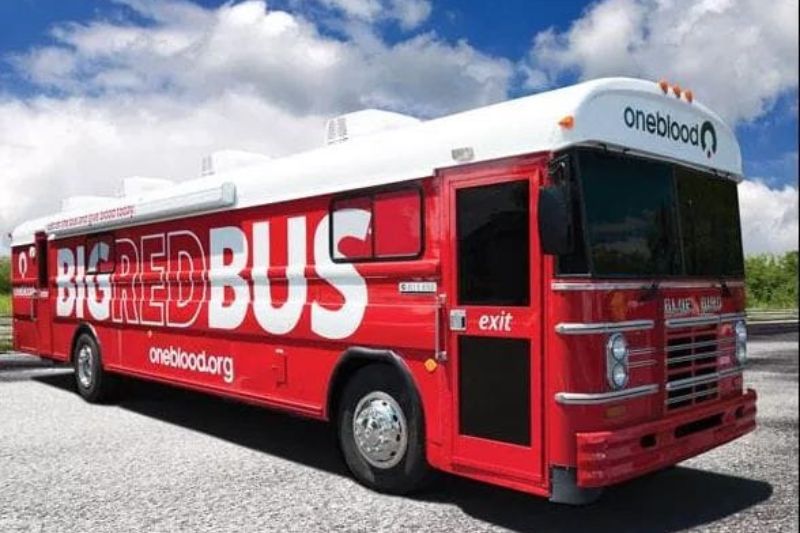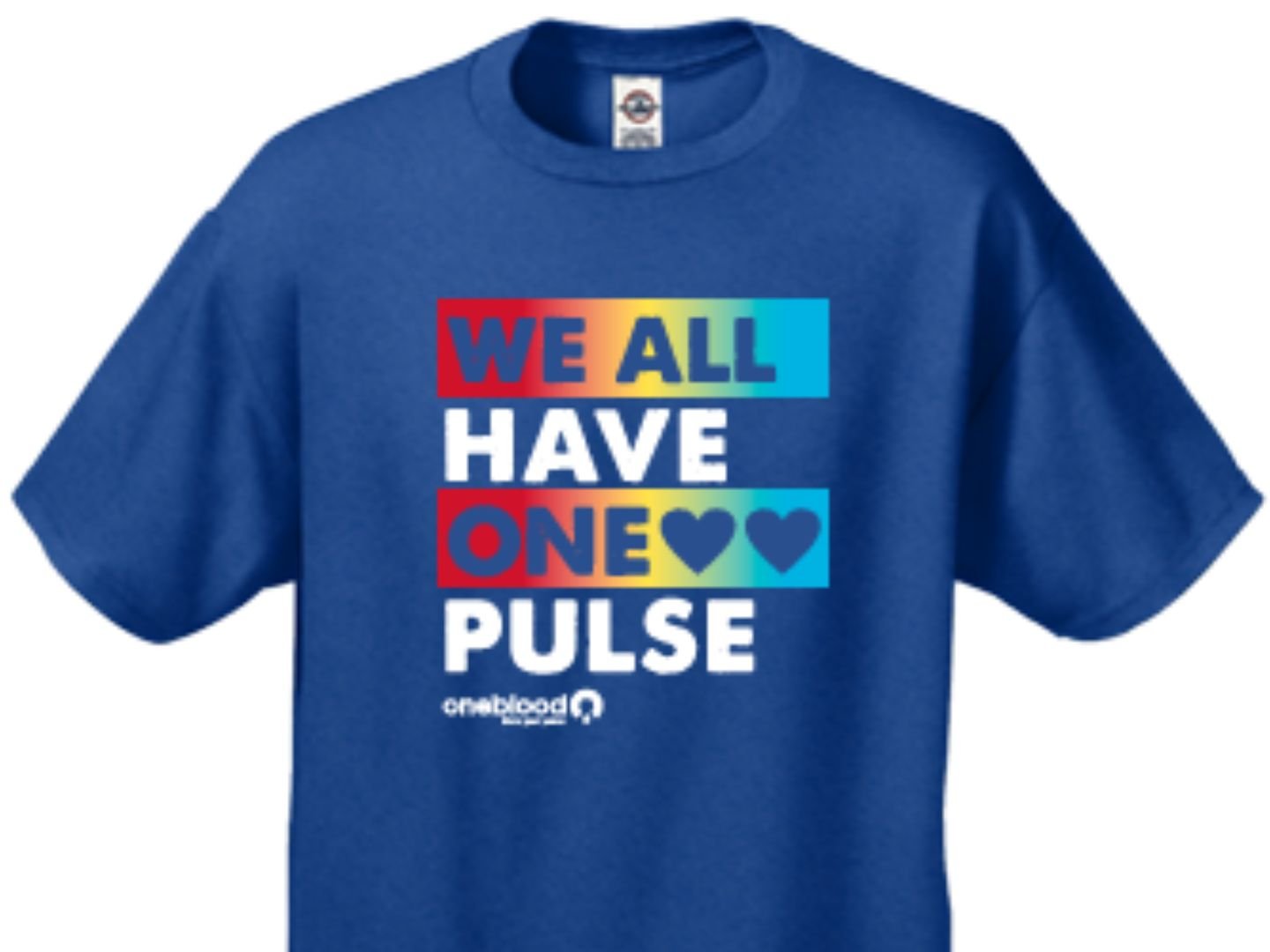Over the years, and especially during the month of June, numerous memorial events are held to honor those lost and/or forever impacted by the Pulse Nightclub tragedy. This year, OneBlood has put out a purposeful call-to-action: give blood and save lives on the Big Red Bus in remembrance of the 2016 Pulse tragedy.
Pulse Remembrance Blood Drive
The Acts of Love and Kindness website, led in part by OneOrlando Alliance, highlights ways residents and businesses can honor the lives lost through love and kindness. Donating blood is among the suggestions.
Image courtesy of OneBloodOneBlood explains that blood donors are essentially first responders helping to ensure that communities, including Orlando, have an ample blood supply before tragedy strikes. It’s essential.
OneBlood will facilitate its Pulse Remembrance Blood Drive from Saturday, June 1 to Wednesday, June 12. All blood donors will receive a limited-edition Pulse T-shirt, a $20 eGift card and a complimentary wellness check-up. To locate the Big Red Bus, search the online blood drive finder. Walk-ins may be available, but appointment scheduling is strongly recommended.
Donating blood can stimulate the “do good, feel phenomenon.” You see, research suggests that when someone does something good, a happiness high ensues. Isn’t saving lives in honor of Pulse something to feel good about?

Why Donate Blood for Pulse Remembrance
Every two seconds someone in the U.S. needs blood. The donation of blood is vital for people for many reasons, like surgeries, cancer treatment, chronic illnesses and, as with Pulse, traumatic injuries.
Unfortunately, the demand for lifesaving blood can’t always be met. That’s because just three percent of age-eligible people donate blood on an annual basis, according to the American Red Cross. Well, Pulse remembrance is reason enough to roll up our sleeves!
Depending on the specific medical need, patients may receive whole blood, red cells, platelets or plasma. It all starts with the donation of one kind person, like you. A whopping 1-in-7 hospital patients require blood transfusions. And here’s the deal… better-matched blood equals better outcomes for patients. So all blood types must be abundantly available.
What to Expect When Donating Blood
Donors should hydrate sufficiently, eat a healthy breakfast, get adequate sleep and forgo smoking or alcohol on the day of and night prior to the blood draw. Then continue hydrating, abstain from alcohol and avoid strenuous physical activity immediately following the donation.
Upon arrival, a blood donor card or driver’s license (or two other forms of identification) may be required for check-in. Then, donors are asked to complete a questionnaire. Next, one is given a mini-physical exam to check blood pressure, body temperature and pulse. This simple assessment of vitals is a nice bonus! A small blood sample may be taken to test for infectious disease and to measure hemoglobin levels that see how much iron is in a person’s blood.
A whole blood donation takes roughly an hour's time from start to finish. But the actual blood draw itself only takes up to 10 minutes. The donation of platelets, the tiny cell fragments that form clots and help stop bleeding, takes longer, averaging three hours instead of the standard one hour. Each blood and platelet donation can save the lives of as many as three people so it's worth the time.
Lastly, studies show that donating blood may positively aid one's own heart health by reducing blood pressure and cholesterol levels. According to OneBlood, being a regular donor can help with blood flow and reduce arterial blockages.
Thanks for considering this act of love and kindness for Pulse remembrance!


